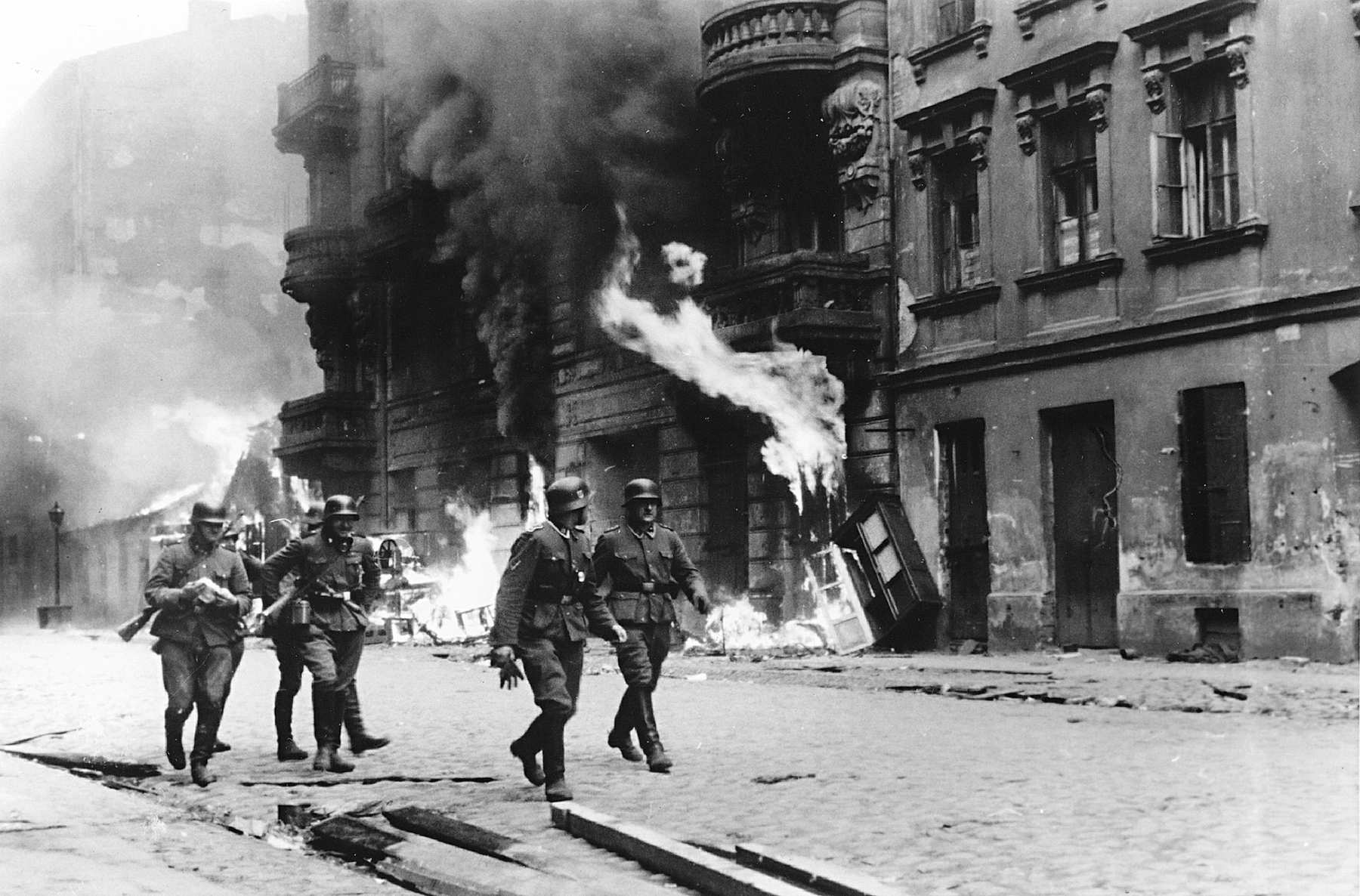
Warsaw Ghetto on Fire
A block of housing on fire as a result of the Jewish uprising in the Warsaw ghetto in April and May 1943. This photo is one of 54 included in “The Stroop Report,” a leather-bound volume summarizing the accomplishments of General Jurgen Stroop and his troops in puting down the Warsaw Ghetto Uprising.
For 4 weeks a group of young Jewish men and women with a few ineffectual weapons resisted a heavily armed German force. Unable to capture the Jewish fighters, the Germans determined to burn them out; they burned the ghetto down building by building. The fighters in the bunkers put up a stubborn resistance, but the cause was hopless from the start. The losses inflicted on the Germans were small. On May 8 the headquarters of the Jewish Fighting Organization, the ZOB, fell and its leader, Mordecai Anielewicz, (1919-1943), with other fighters, committed suicide rather than fall into the hands of the Germans.
The Warsaw Ghetto Uprising was a rebellion against continued deportations from the ghetto. It was the first instance of an uprising by an urban population in German-occupied Europe. The heroism of the defenders in the bunkers was an inspiration to Jews elsewhere under German domination.
For Samuel Artur Zygelbojm, (1895-1943), member of the Polish Government-in-Exile in London, the defeat of the uprising meant the death of his wife, Manya, and son, Tuvia. When word of the liquidation of the Warsaw ghetto reached him, he wrote a farewell letter to the world placing indirect responsibliy on the Allied governments who had done nothing to protest the mass murder. He committed suicide in an attempt to draw world attention to the cause of the murdered Jews of Poland.
Yom Hashoah, the day of commemoration of the HolocaustHolocaust: is derived from the Greek word "holokauston" which originally meant a sacrifice totally burned by fire. In the 1950's the term came to be applied to the destruction of the Jews of Europe by the Nazi German state.
"Holocaust" is also used to describe the annihilation of other groups during World War II.
The Hebrew word "Shoah" meaning catastrophe or destruction also denotes the attempt to destroy European Jewry during WWII. "Shoah" first appeared in this context in a booklet concerned with aid for the Jews of Poland published in Jerusalem in 1940.Source: Encyclopedia of the Holocaust. , occurs on the anniversary of the Warsaw Ghetto Uprising.
Photo Credit: Public Domain